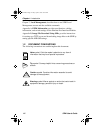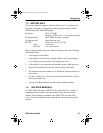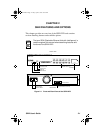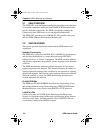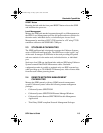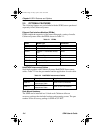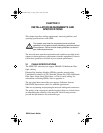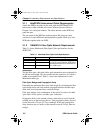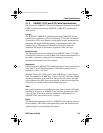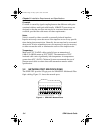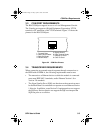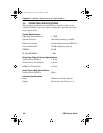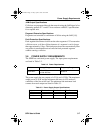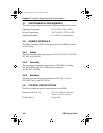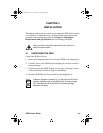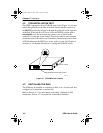
Cable Specifications
SEHI User’s Guide 3-3
3.1.3 10BASE-T UTP and STP Cable Specifications
The devices and 10BASE-T Twisted Pair Segments connected to an SEHI
EPIM-T module must meet the IEEE 802.3 10BASE-T specifications
shown below:
Length
The IEEE 802.3 10BASE-T standard requires that 10BASE-T devices
transmit over a 100 meter (328 foot) link using 22-24 AWG Unshielded
Twisted Pair (UTP) wire. However, cable quality largely determines the
maximum link length. With high quality, low attenuation cable, link
lengths of up to 200 meters are achievable. Cable delay limits the
maximum link length to 200 meters, regardless of the cable type.
Insertion Loss
The maximum insertion loss allowed for a 10BASE-T link is 11.5 dB at
all frequencies between 5.0 and 10 MHz. This includes the attenuation of
the cables, connectors, patch panels, and reflection losses due to
impedance mismatches in the link segment.
Impedance
Cabletron Systems 10BASE-T Twisted Pair products work on twisted pair
cable with 75 to 165 ohms impedance. UTP cables typically have an
impedance of 85 to 110 ohms.
Shielded Twisted Pair (STP) cables, such as IBM Type 1 cable, are also
used. The impedance of IBM Type 1 cable is typically 150 ohms. Higher
impedance increases signal reflection, but because the cable is shielded,
signal reflection has little effect on the quality of the received signal due
to the lack of crosstalk between the shielded cable pairs.
Jitter
Intersymbol interference and reflections cause jitter in the bit cell timing,
resulting in data errors. A 10BASE-T link must not generate more than
5.0 ns of jitter. If the cable meets the impedance requirements for a
10BASE-T link, jitter should not be a concern.
Delay
The maximum propagation delay of a 10BASE-T link segment must not
exceed 1000 ns. This 1000 ns maximum delay limits the maximum link
segment length to no greater than 200 meters.
SEHI Book Page 3 Friday, April 19, 1996 10:46 AM



